Given this array, and this value to be the selected value...
$options = array(
'Extra, Extra small' => 'xxs',
'Extra small' => 'xs',
'Small' => 's',
'Medium' => 'm',
'Large' => 'l',
'Extra Large' => 'xl',
'Extra, Extra Large' => 'xxl'
);
$selected = 'm'; // $selected can be swapped for $row['value'] as in the OP
There are several ways to dynamically construct the option tags inside of a <select> and set the selected attribute on one of them.
First the one-liner inside a foreach loop:
echo "<select name=\"select\">";
foreach($options as $text=>$value){
echo "<option value=\"$value\"" , ($selected == $value ? " selected" : "") , ">$text</option>";
}
echo "</select>";
This code block uses a ternary conditional operator aka conditional operator aka shorthand if/else aka inline conditon. Go here for further reading and examples.
By using double quotes " you avoid having to toggle back and forth between literal strings and variables. *You will have to escape double quotes that are nested inside of the string by prepending \. *Variables can be wrapped in curly brackets to isolate their variable name from the surround text. *Single quotes will not echo the value of the variable.) For continued read about quoting: reference
By using , (commas) instead of . (dots) to concatenate the string, performance is increased. one benchmark
By only adding a space before the selected attribute in the true condition (versus adding the space outside the condition on every iteration), you avoid creating unnecessary spaces inside your tag.
By using an inline condition statement, you avoid unnecessarily declaring a variable into the global scope. If you declare the selected string as a variable, as @independent.guru does, it will be declared/overwritten and used only once on every iteration; this can only decrease performance.
Each programmer will have their own preferences about "readability", "brevity", "consistency", and "performance" and may elect to construct their html using any mixture of the above techniques.
As a general rule, I don't bother to declare a variable that I will only use once. In my personal preference hierarchy, brevity, consistency, and performance always come before readability.
Some of the above points may seem like micro-optimizations, but for a canonical question, it is reasonable to include discussion on performance as any of the listed methods may be copy-pasted directly into projects.
If the first code block was too compact, here are two other versions that spread out the method over multiple lines without generating any extra variables:
Separated shorthand if/else syntax:
echo "<select name=\"select\">";
foreach($options as $text => $value){
echo "<option value=\"$value\"";
echo $selected == $value ? " selected" : "";
echo ">$text</option>";
}
echo "</select>";
Standard if conditional:
echo "<select name=\"select\">";
foreach($options as $text => $value){
echo "<option value=\"$value\"";
if($selected == $value){
echo " selected";
}
echo ">$text</option>";
}
echo "</select>";
All of the above versions of the same method will create this rendered html:
When the page is loaded:

When the select element is opened:

The source code will look like this:
<select name="select"><option value="xxs">Extra, Extra small</option><option value="xs">Extra small</option><option value="s">Small</option><option value="m" selected>Medium</option><option value="l">Large</option><option value="xl">Extra Large</option><option value="xxl">Extra, Extra Large</option></select>
This is the source code tabbed out for easier reading:
<select name="select">
<option value="xxs">Extra, Extra small</option>
<option value="xs">Extra small</option>
<option value="s">Small</option>
<option value="m" selected>Medium</option>
<option value="l">Large</option>
<option value="xl">Extra Large</option>
<option value="xxl">Extra, Extra Large</option>
</select>

